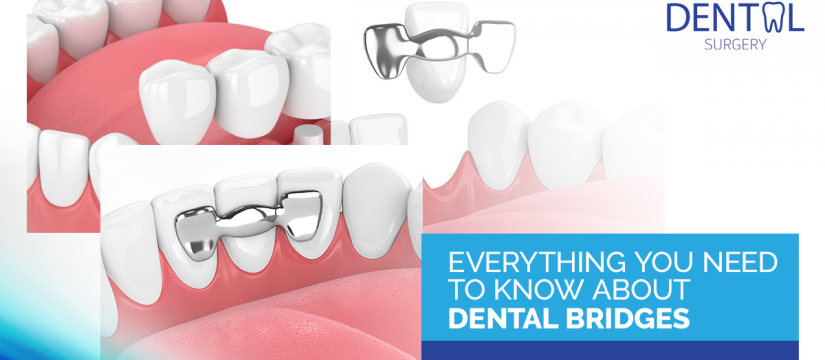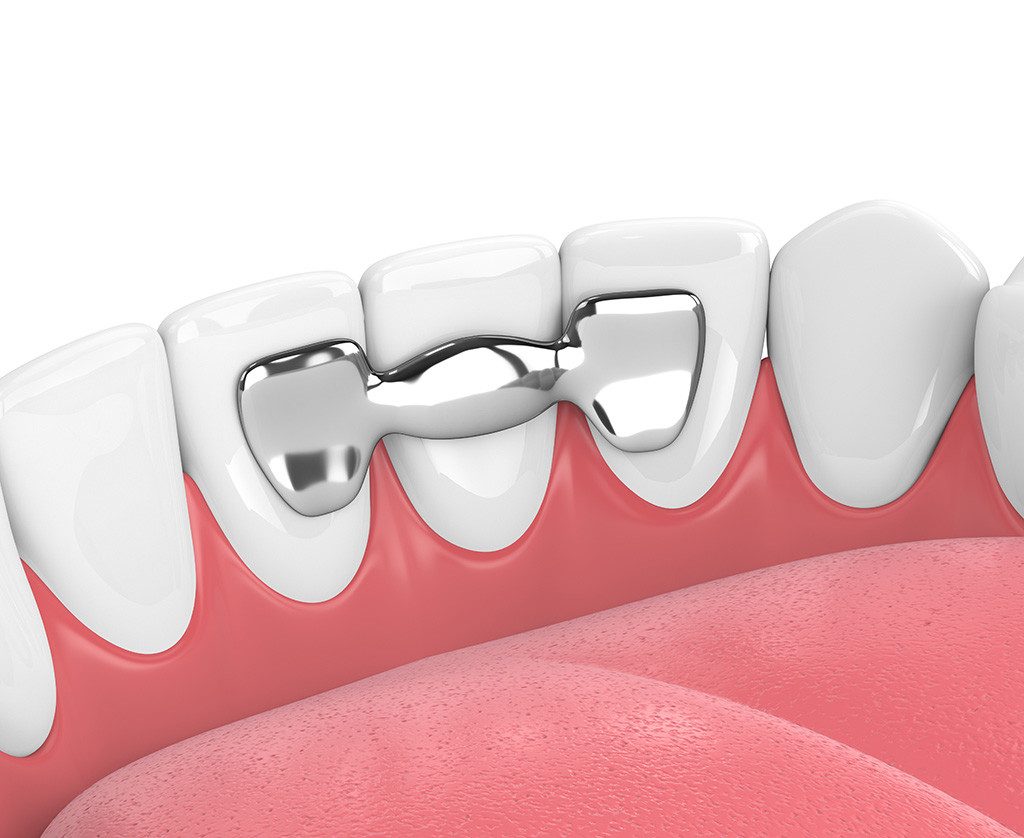
A dental bridge is a bit different to a bridge that goes over a river or valley, in that dental bridges also fill the gap they’re bridging … with false teeth.
In other words, a dental bridge isn’t designed to simply provide a cover over the gap, but rather is a structure that anchors the false tooth or teeth in place using the remaining real teeth alongside.
Why would someone need a bridge?
If you have lost a tooth due to an accident or need to have a tooth removed because it’s too decayed or infected to be filled, or the root-canal filling has failed, you face being left with a gap where that tooth was.
While there are some teeth that you might be able to do without, if the gap is where you do a lot of chewing, it’s likely to make eating more difficult and may even cause significant inconvenience and discomfort.
If the gap is at the front, you might be just as concerned about your appearance. After all, everyone prefers a nice smile to a gap-toothed grin (at least, once you pass a certain age where those are still cute).
If you leave a gap, the remaining teeth either side will start to drift in to fill the space. This can lead to a bad bite, as well as the potential for gum, periodontal, and jaw problems.
Is a bridge always suitable?
There are a few factors that will need to be assessed to determine if getting a bridge is an option for you and, if so, what type of bridge is best suited.
As crowns on the two teeth either side of the gap generally provide the support for the new tooth, those teeth need to be able to do that job. Alternately, a dental implant might act as one anchor for a bridge replacing several adjacent teeth.
The type of bridge, including what materials are used for it, depends on:
- The level of damage;
- The number of teeth missing;
- The position of the missing tooth or teeth;
- Your budget.
What types of bridges are there?
A traditional bridge is the most common and popular type. It can be fixed or removable. It uses two crowns – sometimes called abutments – to anchor the fake tooth or teeth.
A cantilever bridge is created using a less intensive procedure than a traditional bridge as it requires only one crown for support. This makes it a good option for people who don’t want to damage healthy teeth. However, there is some risk of tooth or jaw damage as the single crown can act as a lever.
A Maryland bridge is a more conservative and less invasive option than traditional or cantilever bridges. The bridge is anchored by metal or porcelain frameworks attached to the backs of teeth on either side of the gap. These bridges can preserve healthy teeth, but they are less secure.
An implant-supported bridge, as the name suggests, uses dental implants as anchors. This type of bridge is more expensive and invasive, given at least one implant needs to be put in place, but it is more secure than other options.
What does the procedure involve?
Each type of bridge requires a different procedure, but all involve multiple visits to the dentist.
Typically, the teeth being used to support the bridge will require some treatment in preparation for the fitting, usually including some crown work.
An impression will have to be taken so the bridge can be made exactly to measure.
Often a temporary bridge will then be put in place for a short period, allowing the teeth and tissue involved to settled down after the preparatory work.
When the time comes, the permanent bridge is affixed using strong adhesives.
Depending on the amount of work required to prepare the teeth – potentially including an extraction – there may be anywhere from two to four of five sessions involved.
How will I feel if I get a bridge?
As with any intrusive procedure, there is likely to be some discomfort after each stage of the process, however the tissue inside your mouth recovers relatively quickly.
Your gums may feel tender for a couple of days and there might be some bleeding, but there’s usually minimal downtime once the bridge is in place, so you’ll be fine to go to school or work.
You will want to take care when you chew for at least the first few days but give yourself time to adjust to what is essentially a new ‘bite’.
When you have had bridgework, it becomes even more imperative to pay close attention to your oral hygiene regimen and visit the dentist for six-monthly check-ups.
As with any dental procedure, it’s important to discuss the options beforehand and follow instructions for recovery and aftercare.
Keep in mind that, because every case is different, someone else’s experience with bridgework might not relate closely to your own, so make sure you get a thorough personal assessment and treatment plan from a knowledgeable dentist.




